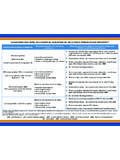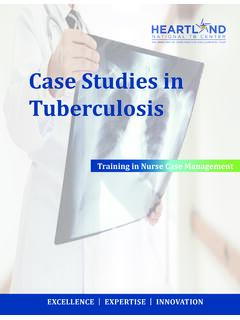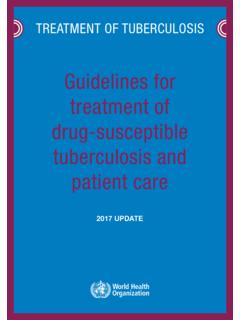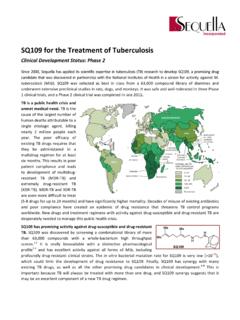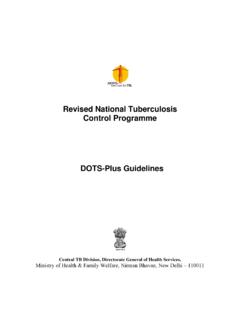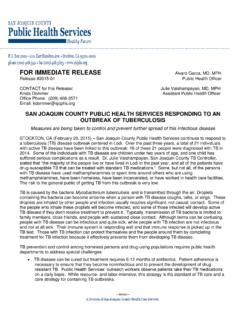Transcription of A Clinician’s Guide to the TB Laboratory
1 A Clinician's Guide to the TB Laboratory EXCELLENCE EXPERTISE INNOVATION. Dear Healthcare Professional, This book provides basic information on the use of the public health and clinical laboratories in the diagnosis and monitoring of patients with tuberculosis (TB) infection and TB disease. The information provided is based on recommendations by the Centers for Disease Control and Prevention (CDC), American Thoracic Society (ATS), Infectious Disease Society of America (IDSA), The Clinical and Laboratory Standards Institute (CLSI), and the Association of Public Health Laboratories (APHL).
2 There are variations in the services provided by individual laboratories; therefore we recommend that you work closely with your state or local public health Laboratory staff in implementing the best care for your patients. Authors: Contributors: Lisa Y. Armitige, MD, PhD Ed Graviss, PhD, MPH. Medical Consultant Director Heartland National TB Center The Methodist Hospital Research Institute Associate Professor of Medicine & Pediatrics Molecular tuberculosis Laboratory University of Texas Health Northeast, Tyler Department of Pathology and Genomic Medicine Email: David Griffith, MD. Denise F.
3 Dunbar Professor of Medicine Manager, Mycobacteriology Mycology University of Texas Health Northeast, Tyler Texas Department of State Health Services Assistant Medical Director Laboratory Services Section MC 1947 Heartland National TB Center Email: Medical Director Texas Center for Infectious Disease Kenneth C. Jost, Jr., BA. tuberculosis Applications Scientist David Warshauer, PhD. Texas Department of State Health Services Deputy Director Laboratory Services Section MC 1947 Wisconsin State Laboratory of Hygiene Email: Communicable Disease Division Barbara J. Seaworth, MD Alysia Wayne Medical Director Program Specialist Heartland National TB Center Heartland National TB Center Professor of Medicine University of Texas Health Northeast, Tyler University of Texas Health Northeast, Tyler Email: i TABLE OF CONTENTS.
4 Table of Contents Chapter 1 - What Providers Should Know 3. What services does my Laboratory provide?.. 3. Table 1 TB Laboratory 4. When can I expect the results from the Laboratory ? .. 5. Figure 1 Timeline of 5. Is Mycobacterium tuberculosis complex always a pathogen?.. 5. Chapter 2 - Interferon-Gamma Release Assays 9. Figure 2 IGRA Process for CD4+ T 9. Principles of the 9. Clinical 9. Table 2 Persons at High Risk of TB Infection and Developing TB Table 3 Testing for TB 10. Table 4 Strengths and Limitations of the Interferon-Gamma Release Table 5 Possible Indications for Use of Both a TST and 11.
5 Laboratory 12. Collecting Blood for QuantiFERON -TB Gold 12. Collecting Blood for T-SPOT . 12. Turnaround 13. General Interpretation of IGRA 13. Table 6 Interpretation of QuantiFERON -TB Gold 13. Interpretation of T-SPOT .TB ..13. Figure 3 T-SPOT .TB Table 7 Interpretation of T-SPOT . 14. Approach to a Borderline or Invalid T-SPOT .TB or an Indeterminate QFT-GIT Boosting .. 15. Follow-up 15. Chapter 3 - Nucleic Acid Amplification Tests Direct Specimen Analysis 19. Principles of the 19. Table 8 Strengths and Limitations of the Nucleic Acid Amplification Laboratory 20. Interpretation of 21.
6 Table 9 Interpreting Nucleic Acid Amplification Test 21. Turnaround 21. ii TABLE OF CONTENTS. Table of Contents Chapter 4 - AFB Smear Microscopy Principles of the 25. Collection of Specimens for AFB 25. AFB Smear Microscopy of Respiratory 25. Table 10 Essentials of Collecting Sputum 25. Steps during Laboratory Processing of the 26. Figure 4 Laboratory Processing of Respiratory 26. Turnaround time for AFB Smear 27. Interpretation of AFB Smear Microscopy 27. Table 11 AFB Reporting 27. Table 12 Strengths and Limitations of AFB Smear 27. Clinical Considerations for AFB 28. Chapter 5 - Culture for Isolation of Mycobacterium tuberculosis complex 33.
7 Principles of the 33. Laboratory Considerations .. 33. Clinical 34. Table 13 Strengths and Limitations of TB 34. Time Frame for Obtaining a Culture for 35. Time Frame for Reporting Culture Results .. 35. Table 14 Interpretation of Culture Results for Respiratory 36. Laboratory Evaluation of Non-Respiratory Specimens for 36. Table 15 Additional Evaluation of Non-Respiratory 37. Chapter 6 - Drug Susceptibility Testing for Mycobacterium tuberculosis complex 41. Principles of the Test .. 41. Critical 42. Minimum Inhibitory 42. Testing 43. General Guidance Regarding Susceptibility 43. Turnaround 43.
8 Clinical Use of Susceptibility 44. Table 16 Timing of Susceptibility 44. Table 17 Strengths and Limitations of Drug Susceptibility 45. iii TABLE OF CONTENTS. Table of Contents Chapter 7 - Molecular Drug Resistance Assays Principles of the 49. Clinical Considerations .. 49. 50. 50. Commercially Available Molecular Drug Resistance 51. Cepheid GeneXpert 51. CDC Molecular Detection of Drug Resistance 51. Table 18 MDDR Performance Characteristics by 52. Other Molecular Drug Resistance Testing 52. Line Probe 52. Figure 5 GenoType MTBDR plus VER Sample 53. Laboratory 53. Interpreting MDDR 53.
9 Chapter 8 - Genotyping What is Genotyping?.. 59. Clinical Considerations .. 59. Laboratory 60. Turnaround 60. Figure 6 Sample Genotype 61. Utilizing Genotyping 61. Whole Genome 62. Chapter 9 - Serum Drug Levels Principles of the 67. Clinical Considerations .. 67. Laboratory 68. Turnaround 68. Appendix Appendix A1 Collection, Transport, and Evaluation of Specimens for Appendix A2 Current Status of Drug Susceptibility Testing Methodology and Critical Concentrations for First- and Second-line 75. Appendix A3 Centers for Disease Control and Prevention Genotyping Methods ..77. Appendix B1 Collecting Gastric 79.
10 Appendix B2 Proper Sputum 81. Appendix B3 Sputum Induction Protocol for Adults and Older 83. Appendix B4 Sputum Induction Protocol for Small 85. Index of Tables and iv TABLE OF CONTENTS. Acronyms and Abbreviations ADA adenosine deaminase MDDR molecular detection of drug resistance AFB acid-fast bacilli MIC minimum inhibitory concentration AIDS acquired immune deficiency syndrome MRSA Methicillin-resistant Staphylococcus aureus AII airborne infection isolation MTBC Mycobaterium tuberculosis complex ALT alanine aminotransferase MTD Mycobacterium tuberculosis direct test AST aspartate aminotransferase NAA nucleic acid amplification APHL American Public Health Laboratories NALC N-acetyl-L-cysteine ATS American Thoracic Society NaOH Sodium hydroxide BAL bronchoalveolar


